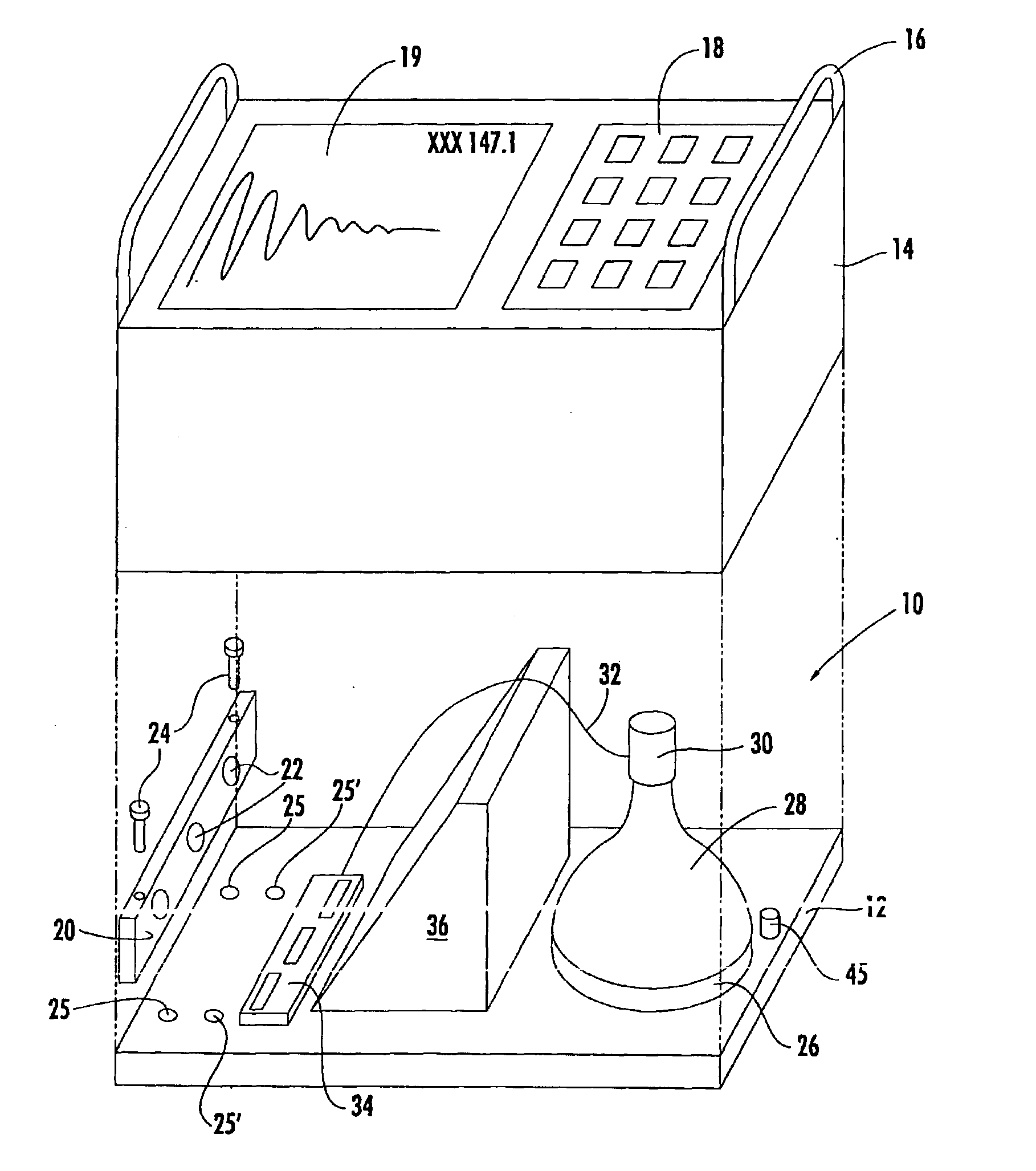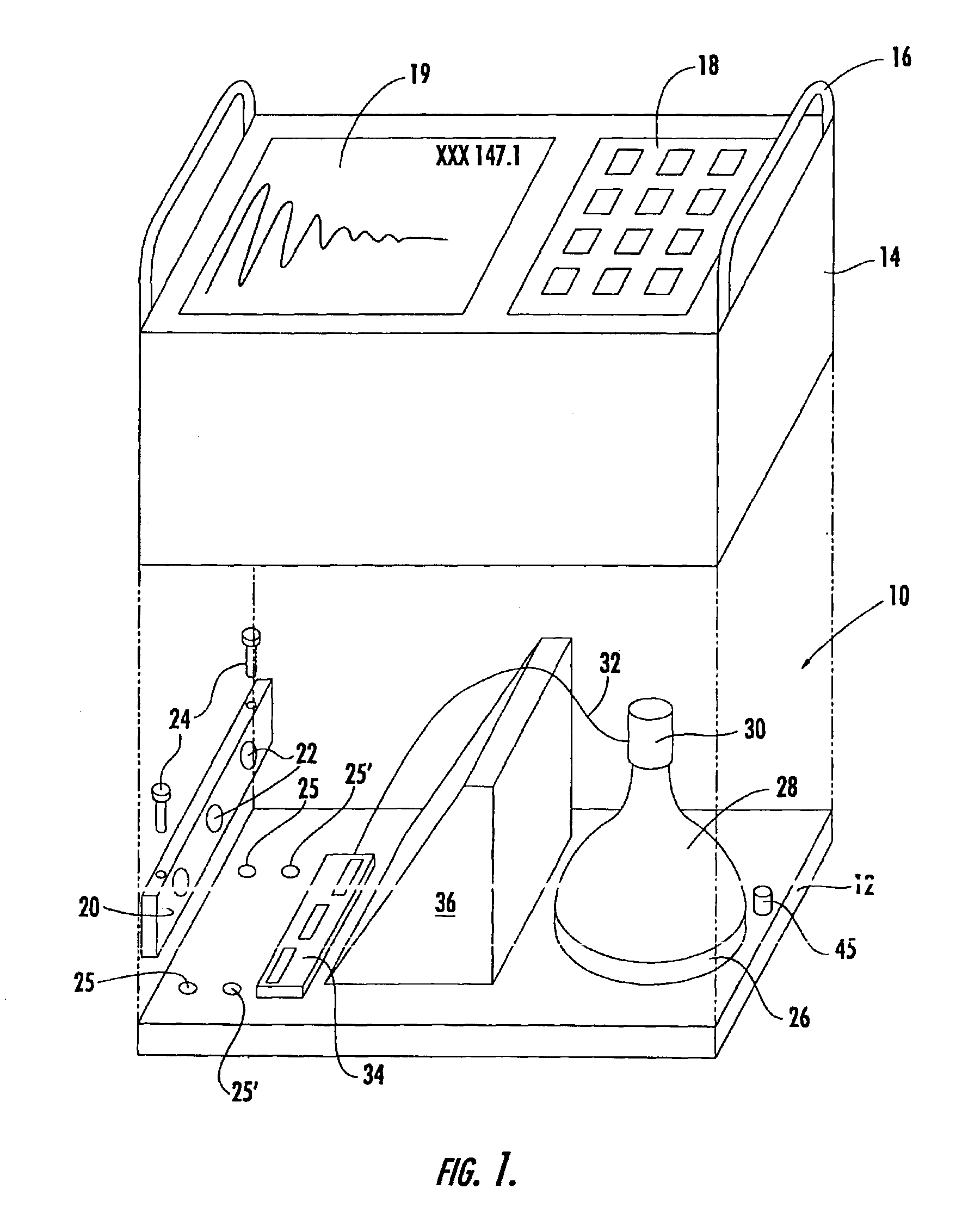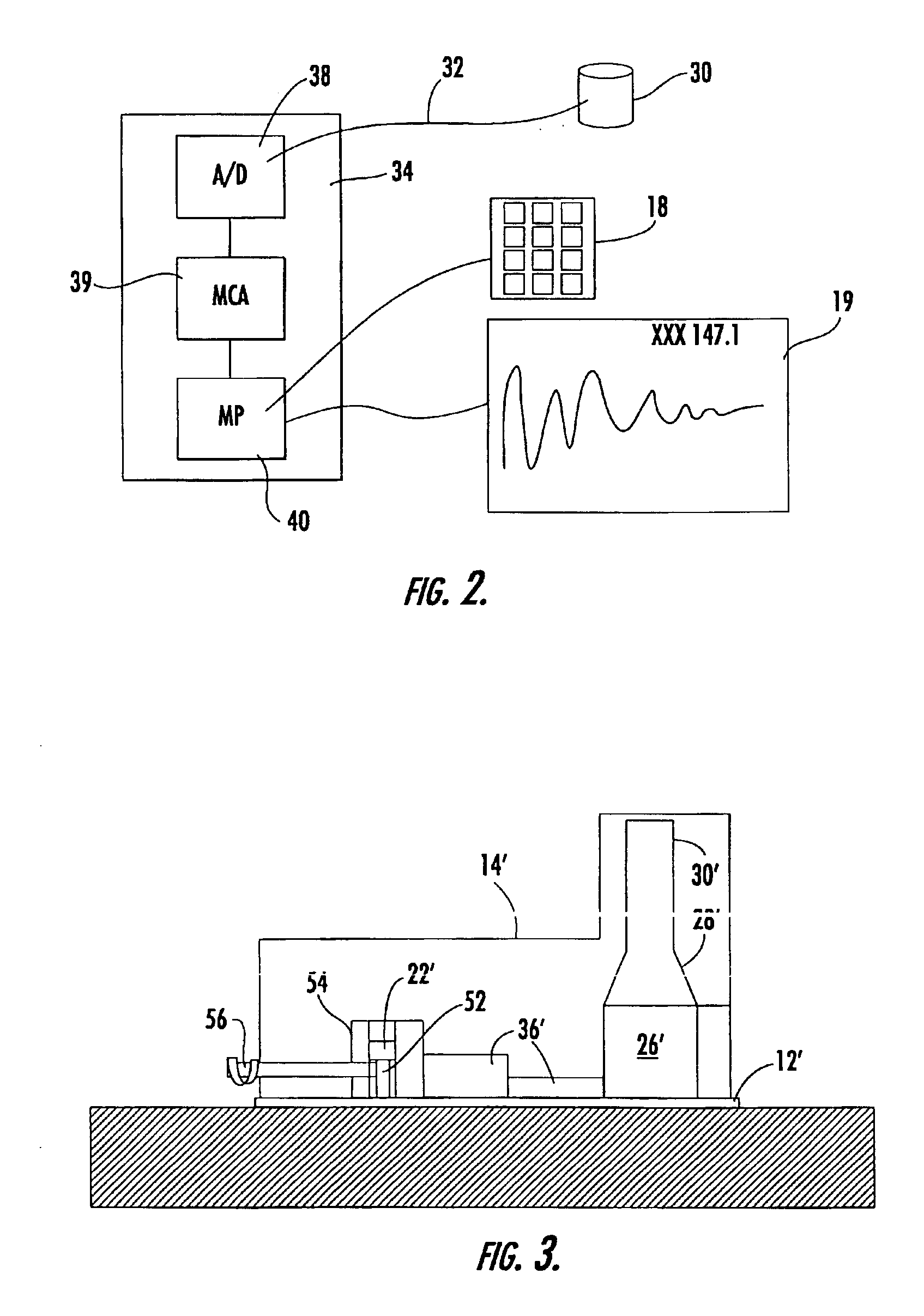Low activity nuclear density gauge
a low-activity, gamma radiation technology, applied in the direction of instruments, measurement devices, scientific instruments, etc., can solve the problems of low signal to noise ratio of gamma radiation detection, limited accuracy, and prior attempts to produce nuclear gauges using low-activity (micro-curie) radiation sources
- Summary
- Abstract
- Description
- Claims
- Application Information
AI Technical Summary
Benefits of technology
Problems solved by technology
Method used
Image
Examples
Embodiment Construction
[0016]The present invention now will be described more fully hereinafter with reference to the accompanying drawings, in which preferred embodiments of the invention are shown. This invention may, however, be embodied in many different forms and should not be construed as limited to the embodiments set forth herein; rather, these embodiments are provided so that this disclosure will be thorough and complete, and will fully convey the scope of the invention to those skilled in the art. Like numbers refer to like elements throughout.
Theory
[0017]The present invention is based on the scattering and absorption properties of gamma radiation with matter. For gamma radiation with energies less than 2 MeV, there are two dominant interacting mechanisms with matter. In the 0.1 to 2 MeV energy range, the dominant mechanism is inelastic scattering (Compton scattering). For energies less than 0.1 MeV, the dominant mechanism is photoelectric absorption. In the 0.1 to 2 MeV energy range, the amount...
PUM
| Property | Measurement | Unit |
|---|---|---|
| primary energy | aaaaa | aaaaa |
| primary energy | aaaaa | aaaaa |
| energy | aaaaa | aaaaa |
Abstract
Description
Claims
Application Information
 Login to View More
Login to View More - R&D
- Intellectual Property
- Life Sciences
- Materials
- Tech Scout
- Unparalleled Data Quality
- Higher Quality Content
- 60% Fewer Hallucinations
Browse by: Latest US Patents, China's latest patents, Technical Efficacy Thesaurus, Application Domain, Technology Topic, Popular Technical Reports.
© 2025 PatSnap. All rights reserved.Legal|Privacy policy|Modern Slavery Act Transparency Statement|Sitemap|About US| Contact US: help@patsnap.com



